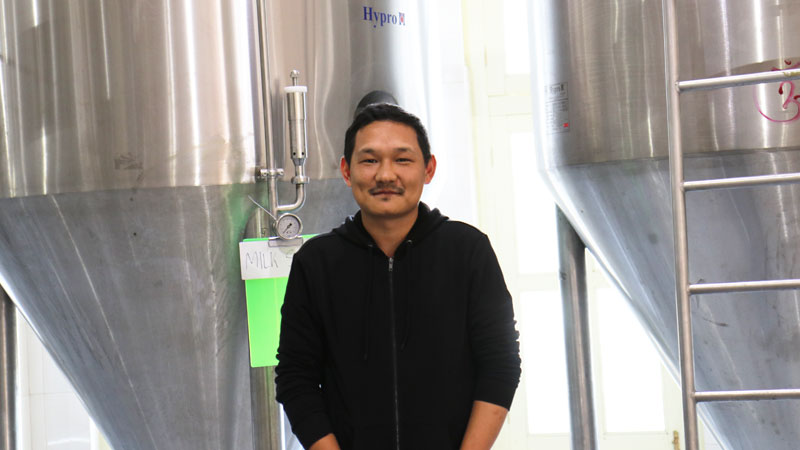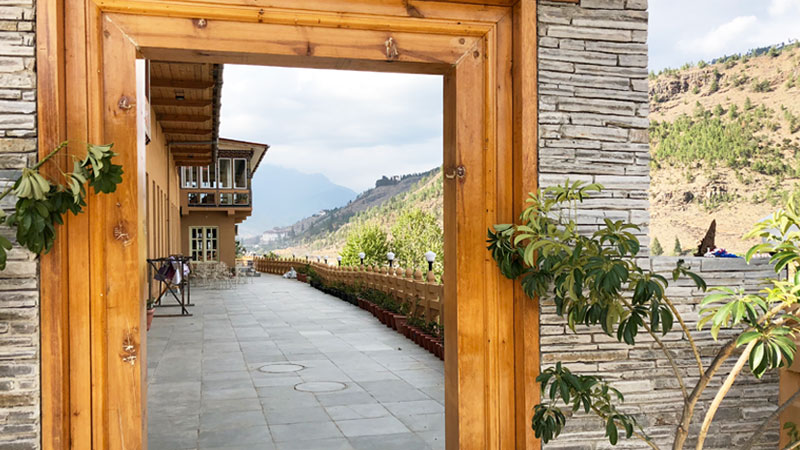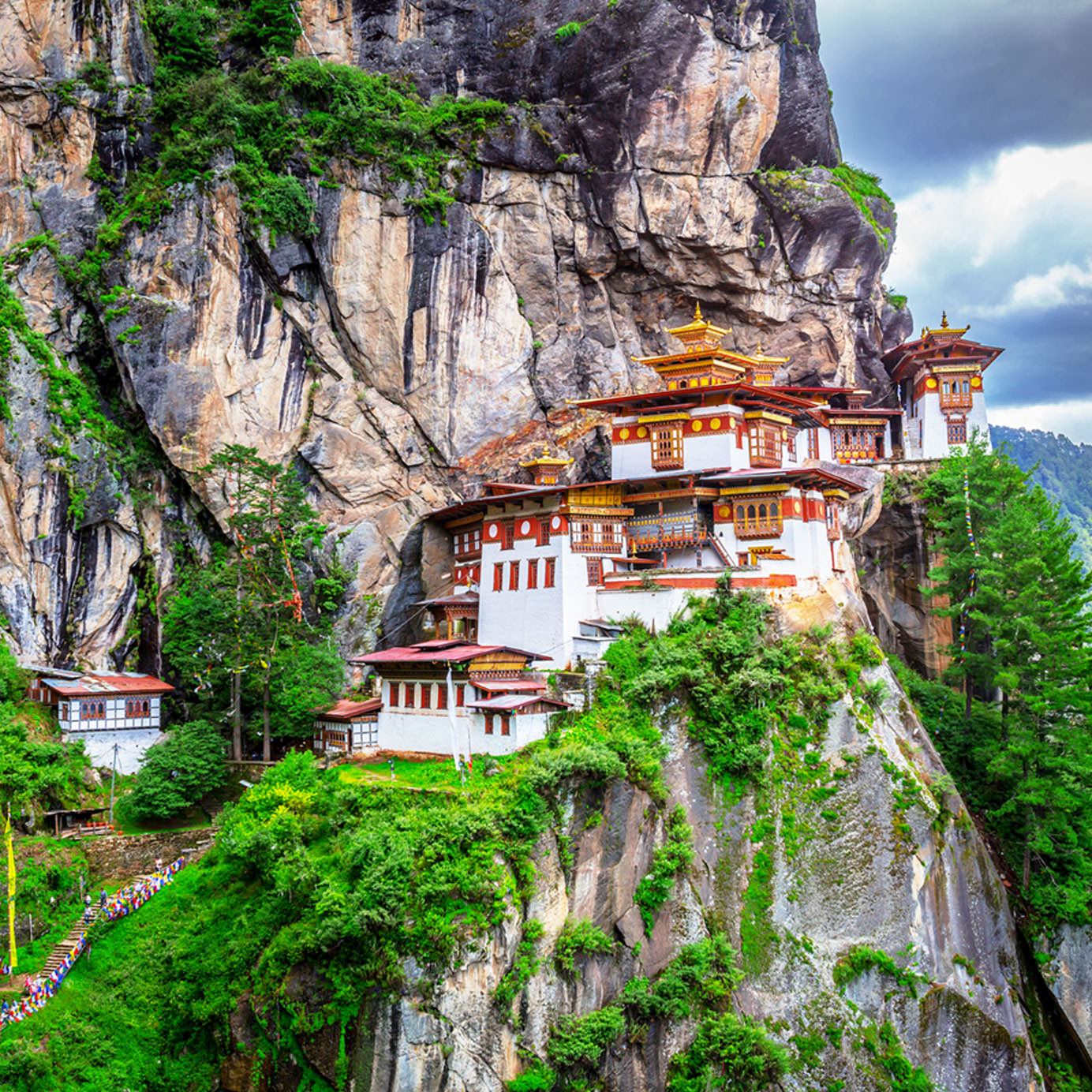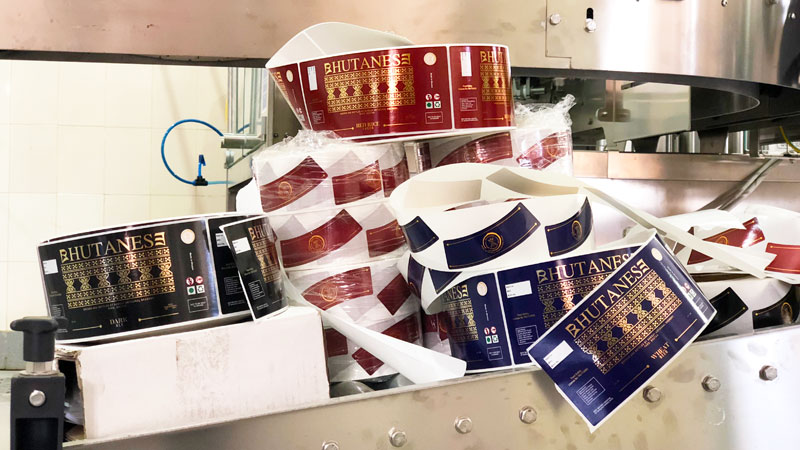Bhutan is a difficult place to get to, purposefully so. About 800,000 people live in this landlocked Himalayan kingdom, which is roughly the size of Switzerland. Bordered by China and India, the world’s most populous countries, tiny Bhutan has long looked inward, seeking to preserve its traditional Buddhist culture.
Television was banned until 1999. Photos of the royal family are ubiquitous, both on the outside and inside of buildings. The government encourages the wearing of traditional dress — the gho for men, the kira for women — through law. Tourism is tightly managed and restricted. The country is guided by the philosophy of Gross National Happiness, which places well-being on par with economic development.
Dorji Gyeltshen has spent the past two years building a brewery in Paro, a town 35 miles from the capital, Thimphu. His project, Namgay Artisanal Brewery, overlooks the notoriously challenging Paro airport, where fewer than a dozen pilots are certified to land. It is Bhutan’s only international airport.
Gyeltshen’s goal is not to build Bhutan’s first brewery, or even its first craft brewery. In 2018, the craft beer wave has already reached isolated Bhutan. Instead, Gyeltshen is seeking to brew a truly local beer and, in doing so, to create a modern, Bhutanese beer culture.
I visited Gyeltshen’s still-under-construction Namgay Artisanal Brewery in April. The brewery was already supplying kegs to a handful of bars in Paro and Thimphu and was nearing completion. As he awaited canning line certification, Gyeltshen was overseeing the final stages of construction, hiring bar and restaurant staff and working with his team on distribution.
The lineup currently includes a flagship Red Rice Lager, a Dark Ale, a Wheat Ale, a Milk Stout, an IPA, a Pilsner, and an apple cider. I wanted to know what it would become.
*
Dorji Gyeltshen is the son of an entrepreneur, a rarity in a country that relies primarily on agriculture. Subsistence farming has only recently begun to give way to urbanization in parts of Bhutan.
His father worked in construction, import/export, retail, and eventually hospitality. The family currently operates one of the nicest locally owned hotels in the country, and Gyeltshen studied hotel management at Les Roches in Switzerland in 2003. In his time off he was exposed to European brewing traditions. Mindful of Bhutan’s farming traditions — barley, wheat, and other cereals are common — he began putting together a plan to one day open a brewery.
In 2009, Gyeltshen returned to Bhutan. He spent half a decade working at his family’s hotel while homebrewing on the side, but remained committed to the idea of producing a “100 percent local” beer. In 2015 he had a finished business plan for the brewery. The initial idea was to brew perhaps 300 liters per day. As he spoke to investors, that changed.

“I met some people to help me with my business plan, to help me look for investors,” Gyeltshen says. “They said maybe scale it up to 500 liters. Then, as I was shopping around, my father came in and he said I can help you with the finances, but you have to scale up more. So we scaled it up to about 1,000 and then from 1,000 we went up to 2,000 liters a day.”
The reason for the outsized ambitions? “The idea was to have a five-year plan,” Gyeltshen recalls. “But my father always believes if you have a plan of what you want to be in five years, why not do it right now and just get it over with. I said yeah, I’m up for the challenge.”
A plan in place, and an initial investment secured, Gyeltshen leased unused family land from his mother. Bhutan’s remoteness, along with its extreme altitude and resultant temperature swings, presented unique challenges. He sourced brewing equipment from India and Europe.
*
Following a chance encounter with Steve Hindy, Brooklyn Brewery’s famous co-founder, Gyeltshen decided to focus on a uniquely local lager. Red Rice Lager is the brewery’s flagship, made with red rice sourced from partner farms in the area. Red rice, which has a nutty flavor, is common in Bhutan, as it is better suited than white rice variants to high altitudes.
Namgay’s Red Rice Lager is at the heart of what Gyeltshen is hoping to do, both philosophically and commercially. While he won’t name a favorite beer among the pilot brews — “I’m passionate about all of them and want to see what we can bring out from Bhutan” — he knows that the Red Rice Lager will serve as a gateway for locals and a calling card for tourists.
“We wanted to keep the [Red Rice Lager] similar to a commercial brewed beer because we didn’t want to introduce the Bhutanese palate straight away to like something like an IPA,” he says. “The idea is to also do something of the place, so we used the red rice.”
Gyeltshen describes another beer, the Dark Ale, as a farmer’s beer. This beer relies on husks from locally grown barley that would otherwise be discarded, which are then mixed with imported malts.
Statistics are hard to come by, but everyone I spoke to in Bhutan believed that Druk 11000 — an 8 percent ABV brew sometimes described as malt liquor — is the nation’s most popular beer. The Red Rice Lager is easy drinking, on the sweet side, but not overwhelmingly so. It’s not hard to imagine a Druk 11000 drinker embracing the beer. Pair it with locally influenced pub fare at Namgay’s now-open brewpub, and you can begin to see the path that Gyeltshen hopes to walk.
Ema datshi, a mix of chili peppers and yak’s milk cheese, is described in many places as Bhutan’s “national dish.” Like most local foods, it is extremely spicy and begs to be paired with something strong.
Gyeltshen’s suggestion? “I would love to pair my milk stout with the Ema datshi, though I think it’s a bit too rich,” he says. “If you want to make it a complete turnaround, I think IPA would go pretty well with it.”
*
Gyeltshen rightly wants to win local fans, but tourism will also play a role in commercial success (as will exports eventually, particularly to India). Bhutan has fewer than 800,000 citizens, and Namgay is not the only game in town.
Druk 11000 is brewed by Bhutan Brewery, the country’s largest beer producer. Bumthang Brewery, founded by a Swiss expat, produces Red Panda Beer, a hefeweizen. And there is Ser Bhum Brewery, another craft-focused upstart.
Bhutan also has a unique homebrewing tradition. Sin Chang and Bang Chang are true farmhouse brews, made from locally available grains. They are reserved for special occasions like the Tshechu festival and cannot be sold commercially. Because these beers are literally brewed on farms by thousands of Bhutanese families, it’s an open question what will happen to them as urbanization continues.

The government has pursued a low-impact, high-value strategy as it has gradually opened the country to international tourism. In the 1990s, visits were in the low tens of thousands, dominated by Indians and, to a lesser extent, visitors from Bangladesh and the Maldives. Tourists from these countries can enter the country without a visa and are still the most prominent, but they have now been joined by other Asian, European, and U.S.-based visitors.
In 2017, total visits are estimated to have eclipsed a quarter-million. This number might seem small, but, at nearly a third of the country’s total population, it raises questions about the limits of “low-impact” tourism.
Government fees aim to deter endless growth. For visitors from countries that require a visa, including the United States, a government-mandated honorarium of $200 to $250 per person per day covers nearly all expenses, including guide, driver, meals, and entry-level lodging. The fees are partially used to pay for education, health care, and nature conservancy.
Gyeltshen believes the expensive price of entry attracts visitors who are particularly predisposed to exploring Bhutan’s culinary offerings.
“I [think] the food and beverage industry needs to be developed because we’re selling ourselves as an upscale market,” Gyeltshen explains. “I think it’s time [to increase] the value that we provide to the people visiting. The cultural part of it is there; we are helping to preserve the nature of our cultural heritage. The food and the beverage industry can be a part of that ecosystem as well.”
*
As in most countries, contradictions are prevalent in Bhutan. The country’s inward focus, coupled with the tireless march of modernity, makes these incongruities exceedingly apparent.
Because Bhutan is largely a Buddhist nation, no animals are killed for meat here. Butcher shops, however, are a common sight. The meat is imported from India.
Television was banned until 1999, but on flights from places like Bangkok, Bhutanese line up to check oversized flat screens purchased there. The country has embraced democracy — a “gift” from the previous king — but the monarchy is still deeply revered.
My wonderful guide, Kinley, spent our 10 days together wearing a gho. I came to learn this was by government mandate. When he accompanied me to a bar to try some other local beers, off the clock, he arrived at my hotel in jeans, T-shirt and a Nike hat. He was proud to wear the gho while working, he said, and he was an excellent emissary of his culture. He also was very much someone who knew the wider world and Bhutan’s ongoing struggle to preserve its culture as it opens its borders — to two of the world’s largest economies, no less.
Against this backdrop, it’s fair to ask what creating a modern beer culture actually means. For Gyeltshen it entails supporting local farmers and integrating local ingredients to create beers of place. “We have oranges, we have cardamoms, and even hazelnuts,” he explains. “We want to see what we can do in terms of [local] herbs and spices. We want to play with the red rice as much as possible to see what kind of other flavors you can get from it.”
In the future, according to his revised five-year plan, “hopefully we [are working] with the farmers to create a malting industry here. Maybe even a hop plantation.”
Records are impossible to come by, but Gyeltshen has been told that in the “late ’70s, early ’80s, they did try to grow hops here and it was a success,” he says. Lack of interest from farmers is the only reason why the hop farms were discontinued.
Gross National Happiness is the government’s driving philosophy, but economic development cannot be ignored in a country where subsistence farming is still common. Gyeltshen sees beer as a small part of solving that riddle — a truly local beer of place that can empower farmers, bring citizens together, and offer a growing number of tourists a taste of something that cannot be found anywhere else. I hope the next five years prove him right.

